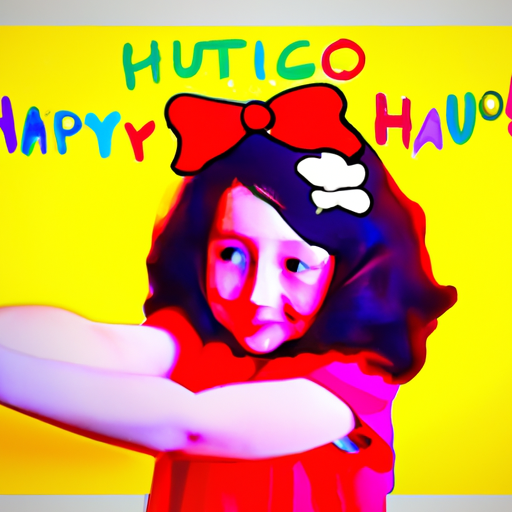
-
Table of Contents
Embracing Whimsy in Children’s Graphic Design

Children’s graphic design plays a crucial role in capturing the attention and imagination of young minds. It is a powerful tool that can shape their perception of the world and foster creativity. One approach that has gained popularity in recent years is embracing whimsy in children’s graphic design. By incorporating elements of playfulness, fantasy, and imagination, designers can create captivating and engaging experiences for children. In this article, we will explore the importance of embracing whimsy in children’s graphic design and how it can positively impact their development.
The Power of Whimsy
Whimsy refers to a lighthearted and fanciful quality that evokes a sense of joy and wonder. It is an essential ingredient in children’s graphic design as it taps into their natural curiosity and imagination. Whimsical designs can transport children to magical worlds, spark their creativity, and encourage exploration. By embracing whimsy, designers can create a sense of delight and enchantment that captivates young audiences.
Research has shown that whimsical designs have a positive impact on children’s cognitive and emotional development. According to a study published in the Journal of Experimental Child Psychology, children exposed to whimsical designs demonstrated higher levels of creativity and problem-solving skills compared to those exposed to more conventional designs. The study also found that whimsical designs stimulated children’s imagination and encouraged divergent thinking.
Elements of Whimsical Design
There are several key elements that contribute to the whimsical nature of children’s graphic design:
- Bright Colors: Vibrant and bold colors are a hallmark of whimsical design. They evoke a sense of joy and playfulness, capturing children’s attention and creating a visually stimulating experience.
- Playful Typography: The use of playful and unconventional typography adds a whimsical touch to children’s graphic design. Curved and exaggerated letterforms can create a sense of movement and fun.
- Illustrations and Characters: Whimsical designs often feature imaginative illustrations and characters that are larger than life. These illustrations can transport children to fantastical worlds and spark their imagination.
- Unexpected Details: Whimsical designs often incorporate unexpected details that surprise and delight children. Hidden elements, interactive features, and visual puns can add an element of surprise and encourage exploration.
Case Studies: Whimsy in Action
Let’s take a look at some real-world examples of how embracing whimsy in children’s graphic design has created engaging and memorable experiences:
1. The Dr. Seuss Books
The books of Dr. Seuss, such as “The Cat in the Hat” and “Green Eggs and Ham,” are beloved classics that exemplify whimsical design. Dr. Seuss’s distinctive illustrations, playful rhymes, and fantastical characters have captured the hearts of generations of children. The whimsical nature of his books not only entertains but also encourages reading and language development.
2. The LEGO Brand
LEGO, the iconic toy brand, has embraced whimsy in its graphic design to create a sense of imagination and creativity. The bright colors, playful typography, and imaginative illustrations used in LEGO’s packaging and marketing materials appeal to children’s sense of wonder and encourage them to explore their own creativity through building and storytelling.
3. The Pixar Movies
Pixar, the renowned animation studio, is known for its whimsical storytelling and visually stunning films. Movies like “Toy Story,” “Finding Nemo,” and “Up” transport children to imaginative worlds filled with lovable characters and captivating stories. The whimsical design of Pixar’s movies not only entertains but also teaches valuable life lessons and sparks children’s imagination.
The Benefits of Whimsical Design
Embracing whimsy in children’s graphic design offers numerous benefits:
- Engagement: Whimsical designs capture children’s attention and keep them engaged for longer periods. This can be particularly beneficial in educational settings, where whimsical design can enhance learning experiences.
- Creativity: Whimsical designs stimulate children’s creativity and imagination. By immersing them in a world of whimsy, designers can inspire children to think outside the box and explore new ideas.
- Emotional Development: Whimsical designs evoke positive emotions such as joy, wonder, and excitement. These emotions contribute to children’s emotional development and can create lasting memories.
- Positive Associations: Whimsical designs create positive associations with learning and exploration. By making educational materials and experiences enjoyable, children are more likely to develop a lifelong love for learning.
Conclusion
Embracing whimsy in children’s graphic design is a powerful way to capture the attention and imagination of young minds. By incorporating elements of playfulness, fantasy, and imagination, designers can create captivating and engaging experiences that positively impact children’s cognitive and emotional development. Whimsical designs stimulate creativity, encourage exploration, and foster a love for learning. As designers, it is our responsibility to embrace whimsy and create designs that inspire and delight children, shaping their perception of the world and nurturing their imagination.
